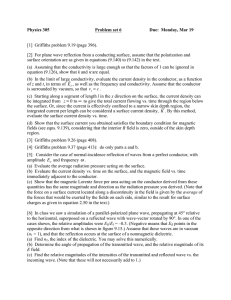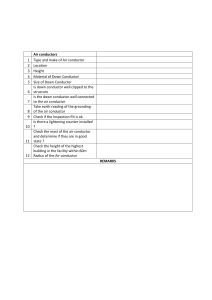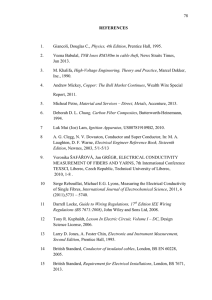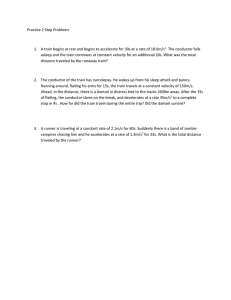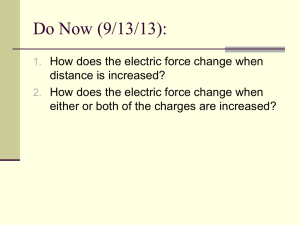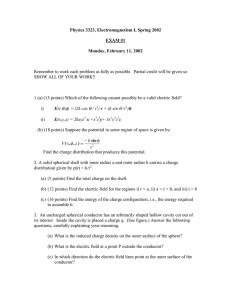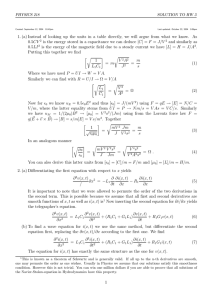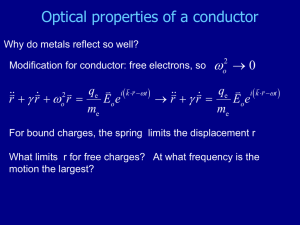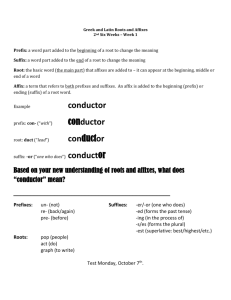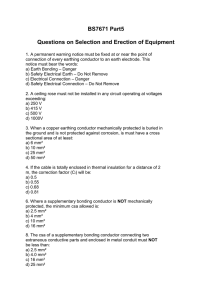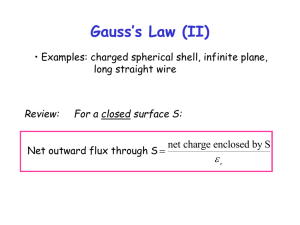Physics 302/572: Electromagnetic Theory II
advertisement
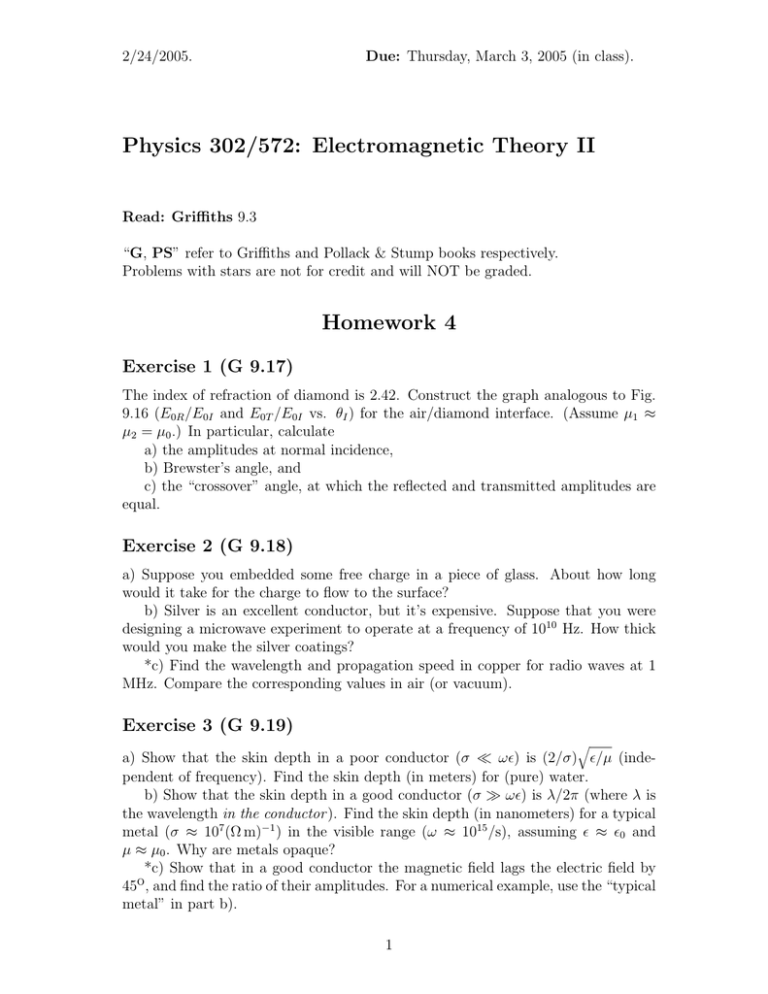
2/24/2005. Due: Thursday, March 3, 2005 (in class). Physics 302/572: Electromagnetic Theory II Read: Griffiths 9.3 “G, PS” refer to Griffiths and Pollack & Stump books respectively. Problems with stars are not for credit and will NOT be graded. Homework 4 Exercise 1 (G 9.17) The index of refraction of diamond is 2.42. Construct the graph analogous to Fig. 9.16 (E0R /E0I and E0T /E0I vs. θI ) for the air/diamond interface. (Assume µ1 ≈ µ2 = µ0 .) In particular, calculate a) the amplitudes at normal incidence, b) Brewster’s angle, and c) the “crossover” angle, at which the reflected and transmitted amplitudes are equal. Exercise 2 (G 9.18) a) Suppose you embedded some free charge in a piece of glass. About how long would it take for the charge to flow to the surface? b) Silver is an excellent conductor, but it’s expensive. Suppose that you were designing a microwave experiment to operate at a frequency of 1010 Hz. How thick would you make the silver coatings? *c) Find the wavelength and propagation speed in copper for radio waves at 1 MHz. Compare the corresponding values in air (or vacuum). Exercise 3 (G 9.19) q a) Show that the skin depth in a poor conductor (σ ω) is (2/σ) /µ (independent of frequency). Find the skin depth (in meters) for (pure) water. b) Show that the skin depth in a good conductor (σ ω) is λ/2π (where λ is the wavelength in the conductor ). Find the skin depth (in nanometers) for a typical metal (σ ≈ 107 (Ω m)−1 ) in the visible range (ω ≈ 1015 /s), assuming ≈ 0 and µ ≈ µ0 . Why are metals opaque? *c) Show that in a good conductor the magnetic field lags the electric field by o 45 , and find the ratio of their amplitudes. For a numerical example, use the “typical metal” in part b). 1

